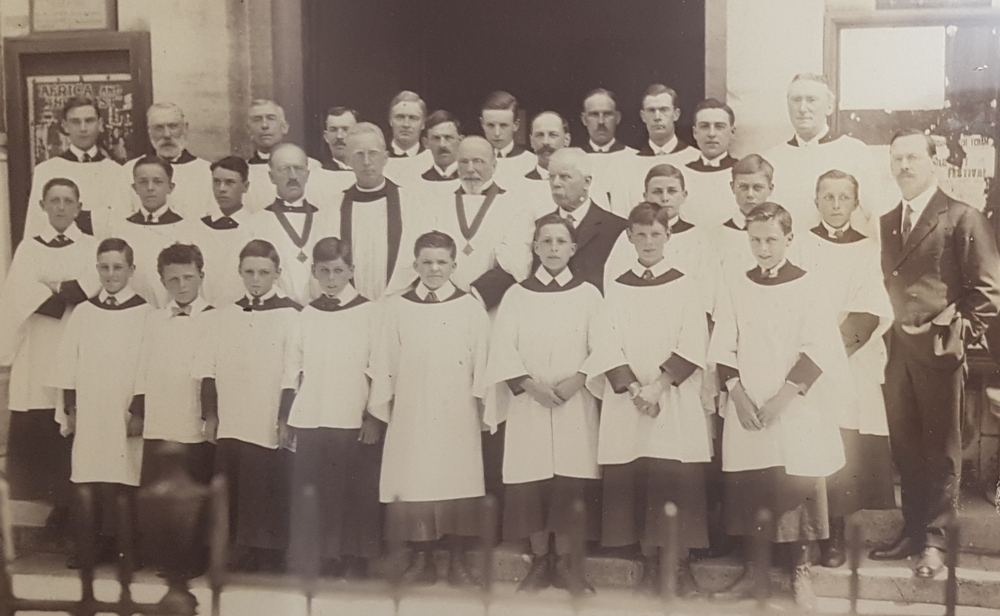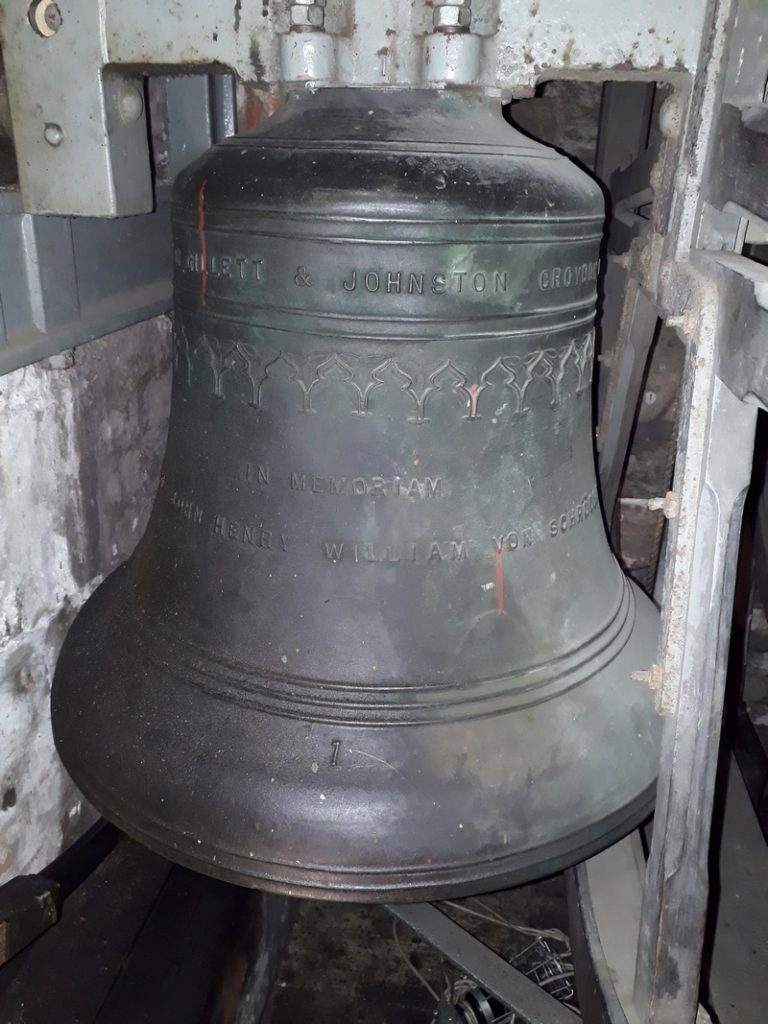St John’s Church building at 200 – Part 2
Celebrating the bicentenary of the current building of St John’s Church, 1820-2020
The Sound of the Church

Image Credit: Egham Museum, P4758
The building was designed as an ‘auditory room’ with acoustics to enhance the congregation’s singing.
Singing praises to God has always been a constant part of church life is various ways, both formal and informal. An article in a parish magazine from 1917 mentions the disappointment of a parishioner that the choirs were wearing robes when they previously did not during the ministry of Rev J. Nicholson 1870 to 1917.
Traditional Harvest Festivals include special musical accompaniments for the service in addition to the choir. In 1896, Mrs. Pocock, Miss Hughes, Mr Standfast, Mr H F Danby, Mr Wm Danby and Mr R Morford were all named in the Surrey Herald as being part of the harvest celebrations, with the latter three playing musical instruments such as the organ and the violin.[1]
As part of the fundraising plans for the rebuilding of St John’s Church, in 1816, Rev John Gostling called for extra subscriptions to help pay for a new organ. This campaign was successful, and the organ was built by Thomas Elliot who also built the Westminster Abbey organ for use at King George IV’s coronation in 1821.
After much use over the years, the organ has fallen into disrepair and after further fundraising by Rev. Tranter, a new Hammond electric organ purchased 1936. This finally gave up during a service in 1968 so the following year, an electro-magnetic organ with a detached console and a larger range of stops and combinations, was purchased. It cost £2,700 and was built by Messers Noterman which was designed to outwardly resembled the old organ but provide better quality.
The clock tower is a striking part of Henry Rhodes’ design, typical of these late Georgian churches.
The tower itself has two clock faces which were originally mechanically operated until electrification in 1977. In 1933, the works ceased and despite requests to the Egham Urban District Council from the Vicar to repair them, they remained faulty. It was P.C. Woods from Surrey Police who eventually offered to repair one disk and striking gear during his local rounds, attending to the other in his off-duty time. The Vicar thanked him for his “noble and public spirit” in the parish magazine.
When the belfry interior was widened in 1977, the clocks were electrified.
Currently St John’s has ten bells in the bell tower, with the oldest 4 dating back to the English reformation in the 1530s. When the church was rebuilt in 1820 these 4 bells were recast and 2 additional bells were added. The inscription on one reads:
“This church was rebuilt and the first stone laid April 9th 1817 by Ld. Vist. Buckley – the Rev. T. Bisse, W.H. Freemantle, E.W. Edgell, BR Torin, T. Reid, G. Gostling – Lay Rector, the Rev. J.W. Gostling Vicar, T. Burton and J. Robinson, Church Wardens”.
Church Bell inscription
In the wall of the bell ringing chamber there are bricks inscribed with the names R. GATES and J. BARTHOLOMEW, 1817. These were possibly two of the bell ringers from that time.

Image Credit: St John’s Church
Almost a century later, the 6 bells were recast again, adding 2 bells totalling 8. These new bells were associated with local residents Baron Sir Henry William Von Schroder, an Anglo-German banker whose name was inscribed in memoriam, and Miss Cabrera, possibly Count Morella’s daughter Ada, who gifted a tenor bell. Another 2 bells were added in 1972, the lightest two of the current ring of 10 bells, making Egham’s tower the largest ring of bells in the Guildford Diocese other than at the Cathedral, which has 12. The lightest bell is 3 cwt (1 cwt is 112 pounds), the heaviest is nearly 17 cwt and the total weight of the bells is 68 cwt.

In partnership with St John’s Church
[1] From Surrey herald 12th September 1896


